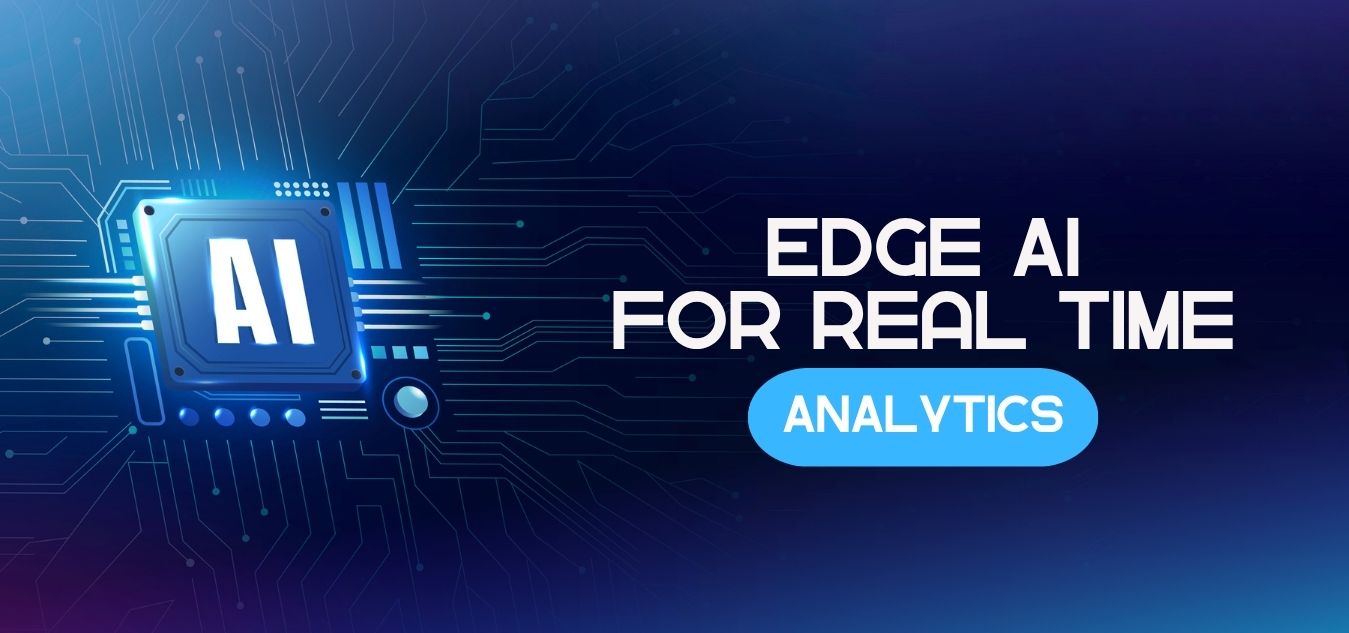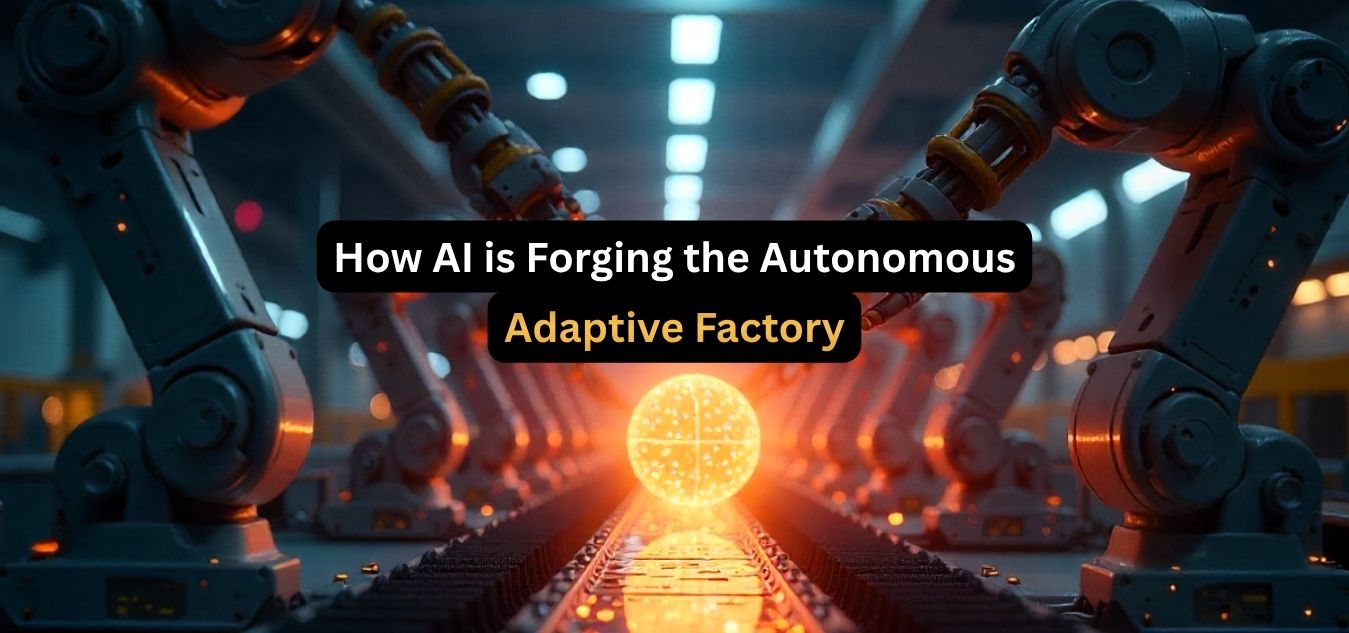
The New Industrial Revolution: How AI is Forging the Autonomous, Adaptive Factory
What is Artificial Intelligence?
In industrial automation, AI is not science fiction; it is a powerful set of tools that grants machines the ability to perceive, learn, adapt, and predict. It represents the crucial shift from mere automation to true autonomy, driving the transformative era known as Industry 4.0.
The Shift from Traditional to Intelligent Automation

To understand the depth of this revolution, we must first look back at the origins of modern industry:
- The Fading Assembly Line: The traditional 20th-century assembly line, once defined by the clang of machinery, is being superseded by the quiet hum of data.
- The Era of Rigid Automation: For decades, “industrial automation” meant rigid, rule-based systems. Robots and machines were programmed to perform single, repetitive tasks perfectly.
- The Limitations of Old Systems: This reliance on Programmable Logic Controllers (PLCs) and SCADA systems was powerful and reliable, but ultimately inflexible. If the product, process, or environment changed, the entire line required costly and time-consuming reprogramming.
- The New Transformation (Industry 4.0): Today, we are in the midst of a more profound transformation, often called Industry 4.0. At its heart is not just automation, but autonomy, and the driving force behind this entire shift is Artificial Intelligence.
AI in industrial automation is not merely an upgrade; it is a fundamental re-imagining of the factory. This article provides an expert-level analysis of how specific AI technologies are being deployed, the tangible value they create, the significant challenges that must be overcome, and the authoritative frameworks emerging to ensure this powerful technology is implemented in a trustworthy and human-centric way.
1. From Rigid Rules to Adaptive Learning: The Core AI Toolbox

To understand the impact of AI, we must first differentiate it from traditional automation. Traditional systems follow a strict “if-then” logic. AI, and specifically Machine Learning (ML), creates its own logic by analyzing vast datasets.
Instead of being programmed for every contingency, an AI-driven system is trained on data from the factory floor—from sensors, cameras, and production logs. This “toolbox” of AI technologies includes:
- Machine Learning (ML): The “brain” of the operation. ML algorithms (from simple regression to complex neural networks) analyze sensor data (temperature, vibration, pressure) to find patterns invisible to humans. This is the engine behind predictive maintenance and process optimization.
- Computer Vision (CV): The “eyes” of the factory. Using deep learning, specifically Convolutional Neural Networks (CNNs), CV systems can inspect products on a high-speed line with superhuman accuracy, spotting microscopic defects, verifying assembly, or guiding robots.
- Generative AI: The “creative engineer.” This newer form of AI, when given a set of constraints (e.g., “must support 500kg, weigh less than 2kg, be 3D printable”), can generate thousands of novel, high-performance, and often organic-looking designs for parts or tools, far beyond what a human might conceive.
- Intelligent Robotics: AI gives robots “sight” and “feel.” Reinforcement Learning (RL) allows robots to learn complex tasks, like grasping oddly shaped objects, through trial and error in a simulation. This leads to Collaborative Robots (Cobots) that can safely work alongside humans, adapting to their presence and even learning new tasks by demonstration.
Traditional Automation vs. AI-Driven Automation
| Feature | Traditional Automation (Industry 3.0) | AI-Driven Automation (Industry 4.0) |
| Core Principle | Repetition (Rule-based, pre-programmed) | Adaptation (Data-driven, self-learning) |
| Flexibility | Low. Expensive and slow to re-tool. | High. Can adapt to new products or variables in real-time. |
| Key Technology | PLCs, SCADA, “Dumb” Robots | Machine Learning, Computer Vision, IIoT, Digital Twins |
| Maintenance | Preventive (Time-based, e.g., “service every 500 hours”) | Predictive (Condition-based, e.g., “service in 72 hours”) |
| Quality Control | Sampling. Spot-checks by humans or basic sensors. | Total. 100% real-time, in-line inspection by CV. |
2. Key Applications: Where AI Delivers Tangible ROI
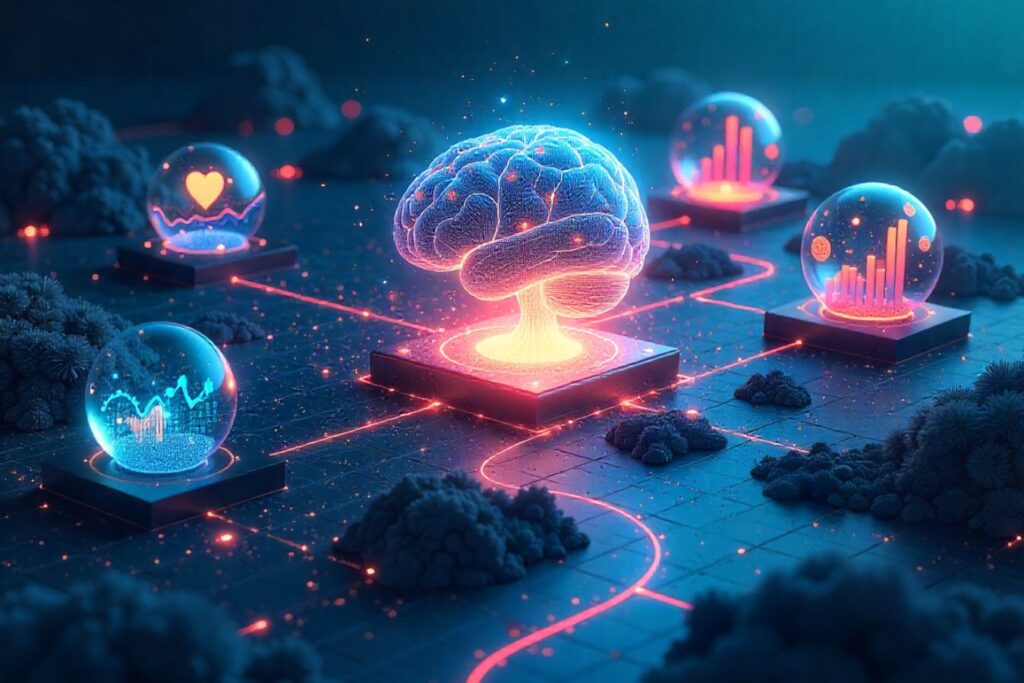
AI is not a theoretical solution; it is solving the most expensive and persistent problems in manufacturing. The value proposition is clearest in these key applications.
2.1. Predictive Maintenance (PdM): Eliminating Unplanned Downtime
The Problem: Unplanned downtime is the single largest cost center for many manufacturers, costing the automotive industry, for example, an estimated $22,000 per minute. Traditional preventive maintenance (servicing a machine every 500 hours) is inefficient it either services parts that aren’t broken or misses impending failures.
The AI Solution (Experience & Expertise): PdM uses ML models to analyze a constant stream of data from IIoT (Industrial Internet of Things) sensors.
- An ML model trained on a pump’s “healthy” vibration and acoustic signature can detect a minuscule, imperceptible change in its pattern.
- It doesn’t just send an alert (“Pump A is failing”). It provides a prognosis (“Based on current load, bearing L-10 in Pump A has an 85% probability of failure within the next 70-90 hours”).
Real-World Impact (Authoritativeness):
- General Motors has deployed AI-powered PdM, saving an estimated $20 million annually by preventing failures in its assembly line robotics.
- Frito-Lay implemented PdM on critical machinery, like cooker-combustion blowers, drastically reducing unplanned downtime and saving millions in lost production.
2.2. Computer Vision for Total Quality Control
The Problem: Human inspection is a bottleneck. It’s slow, expensive, and subject to fatigue and error. A 99% accuracy rate for a human inspector still means 10,000 defective parts for every 1 million produced.
The AI Solution (Expertise): AI-powered CV systems are integrated directly into the production line.
- A camera can scan hundreds of units per minute, using a deep learning model to find microscopic defects in semiconductor wafers, misaligned components in a circuit board, or weld-integrity flaws invisible to the naked eye.
- The system achieves over 99.9% accuracy and provides real-time feedback. It doesn’t just flag a bad part; it can feed data back to the machine (e.g., “Nozzle 3 is drifting”) to correct the error before the next part is made.
Real-World Impact (Authoritativeness):
- BMW uses AI-powered computer vision in its plants to scan vehicles, identify defects, and ensure perfect component alignment.
- Electronics manufacturers have reported 40% reductions in defect rates and 25% lower inspection costs after implementing CV systems.
2.3. Generative Design & The Digital Twin
The Problem: Designing new industrial parts is a slow, iterative process of design, simulation, and physical prototyping.
The AI Solution (Expertise):
- Generative Design: An engineer inputs constraints, not a design. For an automotive bracket, they might input connection points, load-bearing requirements, and the 3D-printing material. The AI generates thousands of design options, all of which meet the criteria. The results are often “alien-looking,” organic structures that are up to 50% lighter while being just as strong, saving massive costs in materials and (for aerospace/auto) fuel.
- Digital Twin: AI supercharges the “digital twin” a real-time virtual simulation of a physical asset or entire factory. By feeding real-world sensor data into an AI-powered twin, companies can simulate the impact of a process change before implementing it, test new robot layouts without stopping production, and optimize energy consumption across the entire plant.
AI Applications and Business Impact
| Application | Key AI Technology | Primary Business Benefit |
| Predictive Maintenance | Machine Learning (ML), IIoT Sensors | Reduces Unplanned Downtime. Moves from reactive to predictive repair, saving millions in lost production. |
| Quality Control | Computer Vision (CV), Deep Learning | Achieves Near-Zero Defects. 100% in-line inspection, higher accuracy, reduced waste, and brand protection. |
| Generative Design | Generative AI, Simulation | Accelerates Innovation. Creates lightweight, high-performance parts in a fraction of the time, reducing material costs. |
| Intelligent Robotics | Reinforcement Learning (RL), CV | Enables Flexibility & Collaboration. Cobots can work safely with humans and adapt to new, non-repetitive tasks. |
| Supply Chain Optimization | ML, Demand Forecasting | Builds Resilience. More accurate forecasting, inventory optimization, and dynamic routing to avoid disruptions. |
3. Building Trust: The Sobering Challenges of AI Implementation
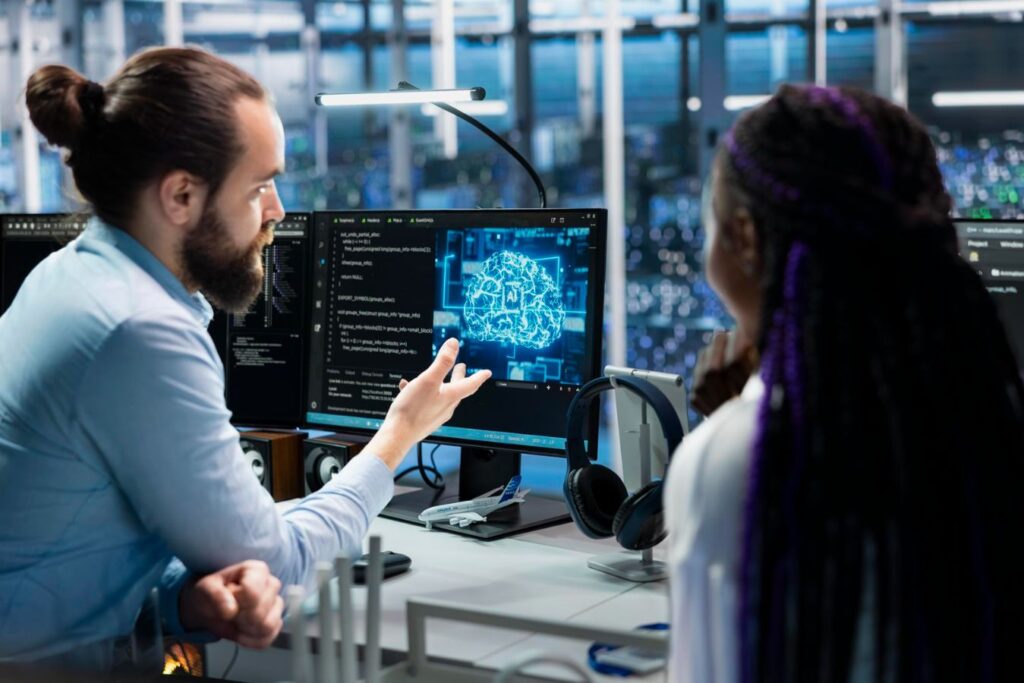
An EEAT-compliant analysis must be transparent about risks. Implementing AI in an industrial setting is not “plug-and-play.” It is a complex, high-stakes endeavor. Trust in these systems is paramount.
3.1. Technical Hurdles (The “Experience” Gap)
- Data Quality & Silos: AI is “garbage in, garbage out.” Many factories are “data-rich but information-poor.” Their data is often “dirty” (full of errors) and locked in siloed Operational Technology (OT) systems (like PLCs) that don’t easily communicate with modern Information Technology (IT) systems. The convergence of OT and IT is the single biggest technical barrier.
- Legacy Systems: You cannot simply layer a cloud AI platform onto a 30-year-old CNC machine. Integrating modern AI with decades-old, non-networked “brownfield” equipment is a massive engineering and financial challenge.
3.2. The “Black Box” Problem (The “Trustworthiness” Gap)
A deep learning model might be 99.9% accurate in flagging a part for rejection, but if it cannot explain why, it’s a “black box.” In high-stakes industries like aerospace or pharmaceuticals, “because the AI said so” is not an acceptable answer for a quality audit. This has led to the critical field of Explainable AI (XAI), which aims to develop models that can provide clear, human-understandable reasoning for their decisions.
3.3. Cybersecurity & Safety (The “Authoritativeness” Gap)
A “smart” factory is a “hackable” factory. As OT systems are connected to the internet, they become vulnerable. A cyberattack that changes the AI’s parameters for a chemical mixture or a robot’s safety-stop boundary is a catastrophic physical threat. Building a robust, AI-aware cybersecurity posture is non-negotiable.
3.4. The Human Element (The “Trust” & “Ethical” Gap)
- The Skills Gap: There is a severe shortage of professionals who understand both data science and industrial engineering. A data scientist may not understand the physics of a turbine, and a mechanical engineer may not understand neural networks.
- Job Displacement: It is dishonest to ignore this. AI will automate many repetitive tasks. However, the data shows this is more of a task transformation than a job apocalypse. AI creates new, higher-value roles: the robot supervisor, the AI maintenance technician, the digital twin operator, and the data-quality manager. The challenge is one of upskilling and reskilling the existing workforce, not replacing it.
4. The Foundations of Trust: Authoritative Standards for AI
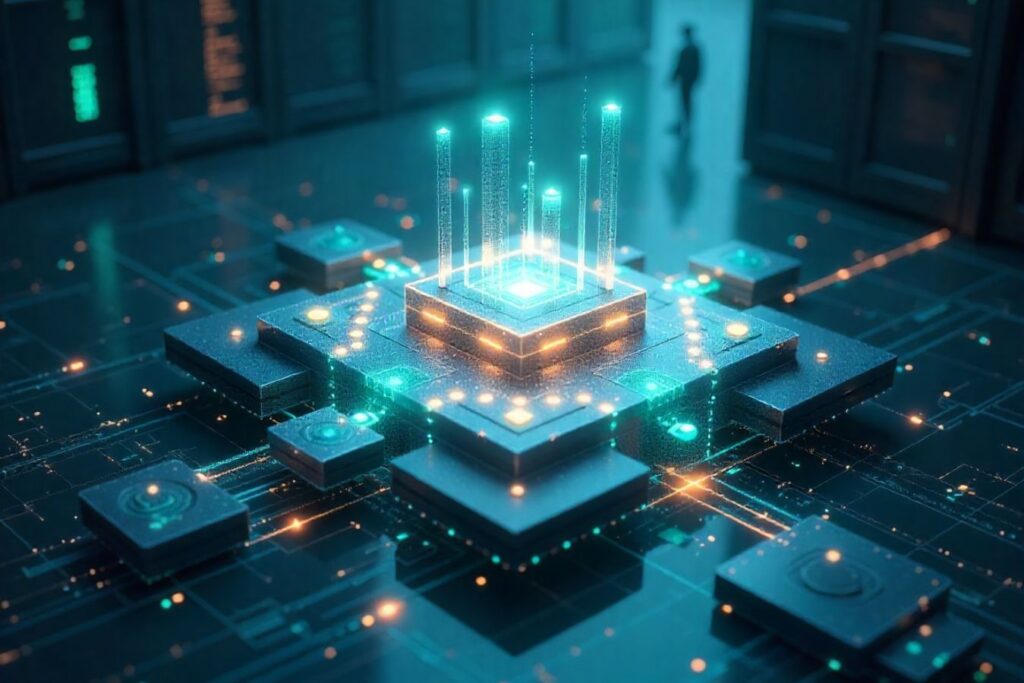
For AI to be widely adopted, it must be trustworthy. This trust cannot be based on a vendor’s promise; it must be built on a foundation of recognized, authoritative standards. The industrial world is actively building this framework.
- ISA (International Society of Automation): This is the leading authority on automation standards. The ISA-95 standard is the foundational “common language” for integrating enterprise (IT) and control (OT) systems. Any trustworthy AI implementation must be built on this or a similar data-architecture standard.
- ISO/IEC: The International Organization for Standardization (ISO) and the International Electrotechnical Commission (IEC) are developing a new suite of standards specifically for AI. Their work on ISO/IEC JTC 1/SC 42 focuses on the entire AI ecosystem, defining key characteristics for “Trustworthiness,” including:
- Accountability: Who is responsible when the AI fails?
- Controllability: Can a human “pull the plug” or override the system?
- Explainability: Can the system’s decision-making be audited?
- Bias & Fairness: Is the AI trained on data that could lead to discriminatory or unsafe outcomes?
True AI “Expertise” is not just knowing how to build a model; it’s knowing how to build a model that complies with these emerging global standards for safety, security, and ethics.
5. The Future is Human-Centric: Industry 5.0

The conversation in advanced manufacturing is already shifting from Industry 4.0 (the connected, automated factory) to Industry 5.0 (the human-centric factory).
Industry 5.0 is not a rejection of AI; it is its maturation. It posits that the greatest gains in efficiency and innovation will not come from replacing humans, but from augmenting them.
- This is the Cobot that anticipates its human partner’s next move and hands them the correct tool.
- This is the AI system that flags a potential quality defect 45 minutes before it happens, allowing a human operator to make a strategic adjustment rather than just reacting to an alarm.
- This is the generative AI that acts as a creative partner for an engineer, allowing them to explore solutions that are more sustainable and efficient.
In this vision, AI handles the repetitive, dangerous, and data-heavy tasks, freeing human workers to focus on what they do best: complex problem-solving, creative thinking, and strategic oversight.
Final Thoughts
Artificial Intelligence is the most powerful catalyst for change in industrial automation since the invention of the PLC. It is moving the factory from a rigid, reactive environment to a predictive, adaptive, and autonomous ecosystem.
The journey is not simple. It demands a clear-eyed understanding of the technical challenges (data, legacy systems), the organizational hurdles (skills gap), and the critical need for Trust. This trust can only be earned through a commitment to balanced, human-centric design and adherence to rigorous, authoritative standards.
The “lights-out,” human-free factory is a misconception. The real future of industrial automation is a “lights-on” partnership, where human expertise is amplified by intelligent, trustworthy, and explainable AI. The question is no longer if AI will be integrated, but how thoughtfully and responsibly we will manage this new industrial revolution.
FAQs (Frequently Asked Questions)
What challenges do manufacturers face when integrating AI into factories?
Manufacturers often face challenges such as high implementation costs, data integration issues, lack of skilled talent, and resistance to change. Overcoming these requires strategic planning, workforce training, and gradual AI adoption.
How can small and medium-sized factories benefit from AI technology?
AI isn’t just for large corporations small and medium factories can use affordable AI tools for energy optimization, predictive maintenance, and inventory forecasting to cut costs and increase efficiency.
What role does human expertise play in AI-driven factories?
Even in autonomous factories, human expertise remains essential for supervision, ethical oversight, system design, and innovation. AI amplifies human potential, it doesn’t replace it.


